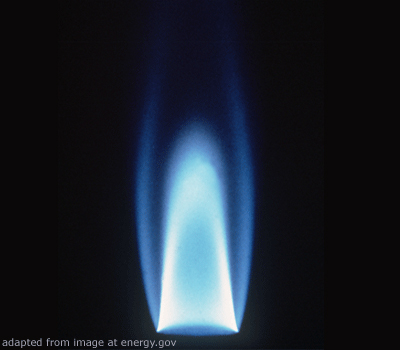Why Gazprom’s ‘Monopoly’ in Europe is Far from Over

(Oilprice.com – Ilana Stav – April 4, 2016)
The first U.S. shipment of liquefied natural gas (LNG) arrived in Portugal last week and Gazprom did not immediately cut its own gas prices for Europe. While European media has hailed the entry of U.S. gas into the market as a game-changer and a monopoly-breaker, in the short term, nothing has changed at all.
Let’s first get things straight: Gazprom is not a monopolistic supplier for Europe, though it’s often called that. The Russian state giant actually supplies about one-third of the gas that Europe consumes. Norway supplies another quarter; so together, the two countries satisfy less than 60 percent of European gas needs. That’s not a monopoly, although the current supply mix means that Gazprom is the single biggest player on the European market.
The U.S., on the other hand, has quickly turned into the world’s biggest natural gas producer thanks to the shale boom. With prices pressed down hard by oversupply, U.S. gas producers are looking for international markets-and Europe is one obvious choice, but not the most lucrative.
According to calculations from one energy industry expert, the price for U.S. LNG landed in Europe could come in at $3.59 per MMBtu. Gazprom’s average price this quarter was $180 per 1,000 cm3, or about $5.14 per MMBtu.
Numbers can be misleading, however, as different calculations make different price assumptions as evidenced by an Oxford Institute for Energy Studies estimate for U.S. and Gazprom prices laid out in an FT article from February.
Now, at first glance things look promising for Cheniere – the company that shipped LNG to the LNG terminal in Lisbon last week. Its gas is competitive. However, we should not forget that the above calculations are based on a price assumption, which, like all assumptions, allows for a wide margin of error. Still, let’s accept the assumption that Cheniere gas is for the moment meaningfully cheaper than Gazprom gas for Europe.
The most logical move for Gazprom, and the scenario considered most likely by media, is to lower prices in order to preserve its market share, much like Saudi Arabia did with oil.
Gazprom is profitable, and it has long-term contracts with its European clients, as the company’s deputy chairman Aleksandr Medvedev told RT. Outside these contracts, it could increase production, of course, but can it “drown” Europe in cheap gas? Perhaps, if it’s cheap enough. But such a scenario is not at all certain. After all, the “drowning strategy” did not exactly do wonders for Saudi Arabia, and it’s now taking steps to diversify away from oil. Russia is aware of this.
But there is something else besides gas prices and Gazprom’s flexibility in this respect that could trip up hopeful U.S. gas suppliers looking for new markets in Europe. In three years, a new gas pipeline will come on stream that will supply Caspian gas to Europe. Initially planned to have a capacity of 10 billion cm3 annually, the Trans Adriatic Pipeline could eventually accommodate double that amount.
Now, that’s not a whole lot of gas, compared with the 172.6 billion cubic meters supplied by Gazprom to Europe in 2013. Still, it is a new source of gas for the continent; in other words, a new competitor.
Gazprom is being watchful of such developments, in the light of Europe’s stated ambition to diversify its natural gas sources. It should also be food for thought for U.S. gas producers: Gazprom has three years to come up with new ways to remain the leader in a market in which it already has a very firm presence.
Without very strong political support from Europe, U.S. gas producers will be at a disadvantage in a market packed tightly with competitors. Since consistently low gas prices have left them with less cash for price maneuvering, conquering the European gas market might prove to be a bigger challenge than expected.
